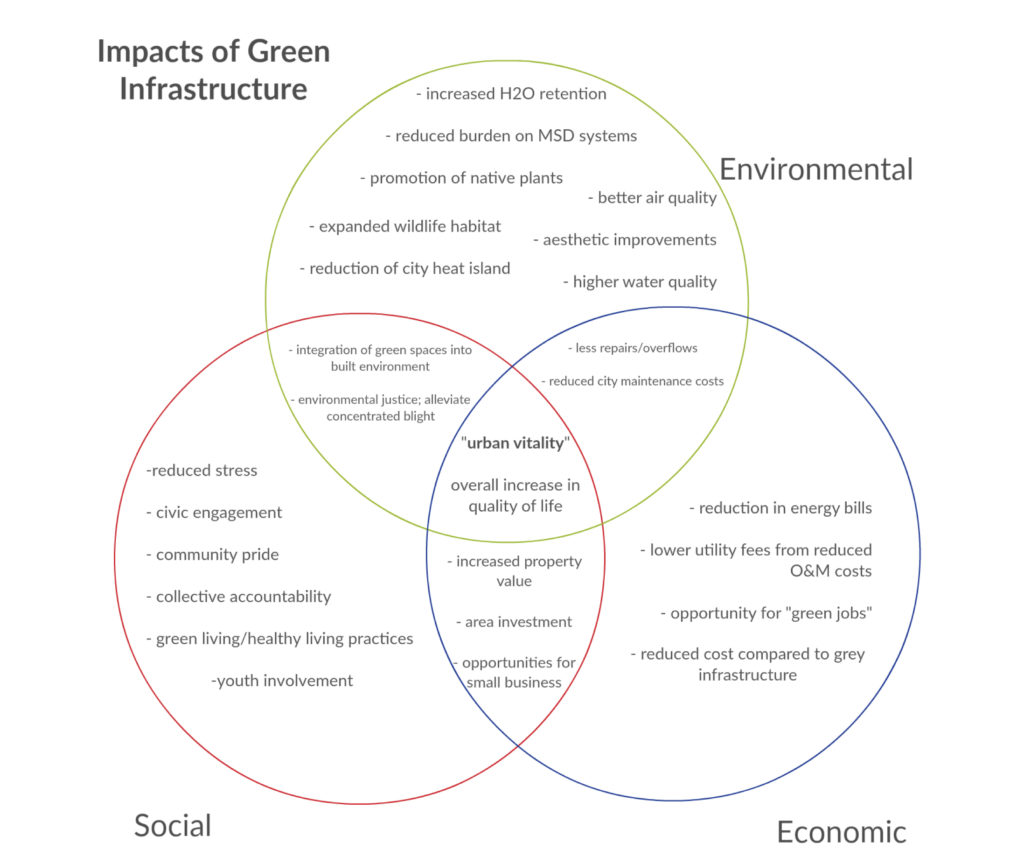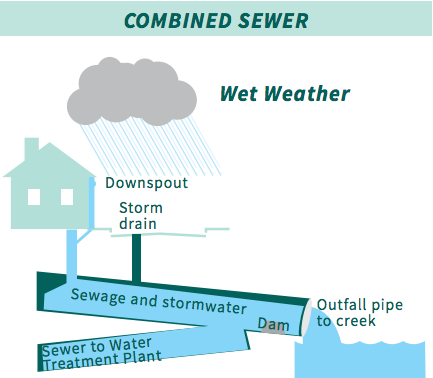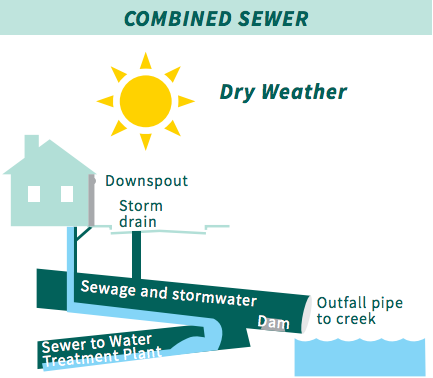Landscapes With Purpose: Green Infrastructure and St. Louis Sewers
The consent decree agreement between the Metropolitan St. Louis Sewer District (MSD) and the Environmental Protection Agency requires $100 million to spent on “green infrastructure” to alleviate Combined Sewer Overflow (CSO) problems that much of the city is facing.
Read about Green Infrastructure below and view our GI Map of St. Louis here!
What is Green Infrastructure?
Green infrastructure, commonly abbreviated as “GI”, is a form of water management that incorporates plants and landscaping practices to control the flow and direction of stormwater. Central to the design of all green infrastructure projects is a concave soil bed that absorbs water and reduces impervious surface area in an urban landscape.
A bioswale in action on New York City’s Streets. Similar bioswales can be found on South Grand in St. Louis
Green Infrastructure has multiple benefits, helping to…
- Reduce stormwater runoff which helps reduce erosion and flooding.
- Increase the amount of water that soaks into the ground to recharge local groundwater.
- Filter harmful pollutants such as oil and grease from driveways, pesticides and fertilizers from lawns, etc.
- Increase biodiversity through providing habitat for beneficial insects and birds.
- Enhance the landscaping and appearance of homes and yards.
- Protect our streams and rivers.

NOTE: While the Venn Diagram above depicts the overlapping benefits of green infrastructure, MCE challenges the triple-bottom-line approach, generally, as insufficient for achieving long-lasting, equitable sustainability, and instead promotes the idea of “strong sustainability,” emphasizing that the human sphere is embedded in a natural system with limits that ought to constrain our actions. For further information, please read “Our Future” under MCE’s publication page
What is Grey Infrastructure?
GI’s plant-based design differs from conventional Grey Infrastructure, which uses traditional pipe-based systems to direct and collect water. The city of Saint Louis installed its first grey infrastructure system in the early 1850s, and today nearly 10,000 miles of pipes are used to transport wastewater across the city.
Because grey infrastructure is such a well-established and standardized practice, it makes the design and construction of project relatively easy and timely when compared to other management practices. Additionally, the engineered design of grey infrastructure makes the practice easy to monitor and control (ex. computer control of sewer outflows, water flow)


In a combined sewer, excess rainfall can lead to overflows into waterways. Green infrastructure reduces the amount of stormwater that reaches sewers, reducing overflow events.
Despite its benefits, traditional wastewater systems can fall into disarray when they are not properly maintained. For years, much of St. Louis’ grey infrastructure was improperly cared for. Sewage and stormwater flow through an aging shared pipe system (combined sewers), and heavy rainfall combined with impervious surfaces causes too much stormwater to enter the sewers. This leads to regular sewer backups and overflows, many of which happen in low-income minority areas of the city.
How can GI fix St. Louis’ Aging Sewers?
GI helps to increase the amount of storm water that can be reabsorbed into the watershed, reducing the occurrence of raw sewage overflows into streets and waterways. St. Louis is one of many cities that are looking to green infrastructure to alleviate the burden on aging grey infrastructure systems. In 2012, Kansas City completed its Middle Blue River Basin Project, helping to reduce annual combined sewer overflows by 76% (292,000 gallons at one outflow).
MCE supports MSD’s efforts to use green infrastructure in order to:
- Reduce overflows and strains on grey infrastructure
- Promote community wellness through education and outreach
